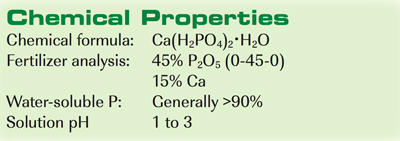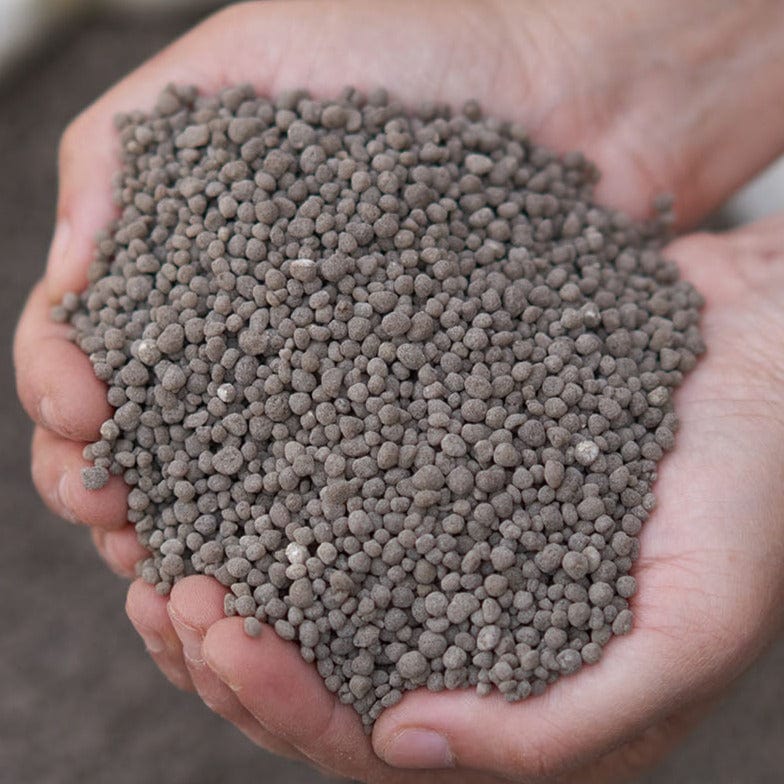In the world of agriculture, understanding the tools at our disposal is crucial for success. One such tool that has gained prominence is triple super phosphate. This fertilizer plays a vital role in enhancing crop yields and soil fertility.
Farmers and agronomists alike are always on the lookout for effective ways to boost plant growth. With its high concentration of phosphorus, TSP has become a go-to solution for many. But what exactly is it, and how does it work?
As we delve deeper into the topic of triple super phosphate, we will explore its production process, benefits, and application methods. Understanding these aspects can help you make informed decisions for your agricultural practices.
Join us as we uncover the secrets of what is triple super phosphate, a powerful ally in sustainable farming that can transform your approach to soil health and crop production.
Table of Contents
ToggleWhat is Triple Super Phosphate?
Triple super phosphate (TSP Ca(H₂PO₄)₂ · H₂O) is a highly concentrated phosphorus fertilizer that has been widely used in agriculture since the 20th century. Known chemically as calcium dihydrogen phosphate, TSP provides essential nutrients for plant growth.

TSP is commonly used in situations where multiple solid fertilizers are mixed for broadcasting on the soil surface or applied in concentrated bands beneath the surface. It is particularly beneficial for leguminous crops, such as alfalfa and beans, where no additional nitrogen fertilization is necessary to support biological nitrogen fixation.
Production of Triple Super Phosphate
Raw Materials
The production of triple super phosphate (TSP) begins with two primary raw materials: phosphate rock and phosphoric acid. These components are essential for creating a nutrient-rich fertilizer.
- Phosphate Rock: This is the main source of phosphorus, mined from the earth and processed to extract the necessary nutrients.
- Phosphoric Acid: Produced by reacting phosphate rock with sulfuric acid, this compound is crucial in the manufacturing process.
Quality Control
Ensuring the quality of TSP is vital for its effectiveness as a fertilizer. Manufacturers implement strict quality control measures throughout the production process.
- Purity Testing: Regular testing for impurities ensures that the final product meets agricultural standards.
- Nutrient Content Analysis: This involves analyzing the levels of phosphorus and other nutrients to guarantee optimal performance in the field.
By adhering to these quality control practices, producers can deliver a reliable product that enhances soil fertility and supports sustainable agriculture.

Nutritional Composition
Chemical Composition
Understanding the chemical composition of triple super phosphate (TSP) is essential for appreciating its role in agriculture. The primary nutrient in TSP is phosphorus pentoxide (P₂O₅), which is vital for plant health.
TSP typically contains around 44-48% P₂O₅, making it one of the most concentrated phosphorus fertilizers available. This high nutrient content means that smaller quantities can be used effectively to enhance soil fertility.
Solubility and Availability
The solubility of TSP in water is another critical factor that affects its performance. A highly soluble fertilizer ensures that plants can readily absorb nutrients.
- Quick Availability: TSP dissolves easily in soil moisture, providing immediate access to phosphorus for plants.
- Effective Uptake: This solubility allows for efficient nutrient uptake, particularly during early growth stages when plants need phosphorus the most.
The combination of high nutrient concentration and excellent solubility makes TSP a valuable asset for farmers looking to improve crop yields and overall soil health.
Benefits of Using Triple Super Phosphate
Enhancing Plant Growth
One of the primary benefits of triple super phosphate (TSP) is its ability to enhance plant growth. Phosphorus is crucial for several key processes in plants, including energy transfer and photosynthesis.
With sufficient phosphorus, plants develop stronger roots, leading to improved nutrient uptake and overall health. This nutrient is particularly important during the early stages of growth when plants are establishing themselves.
Soil Fertility Improvement
TSP contributes significantly to long-term soil fertility. Regular application can help maintain optimal phosphorus levels in the soil, which is essential for sustainable agricultural practices.
- Nutrient Balance: TSP helps balance nutrient availability in the soil, promoting healthy microbial activity.
- Soil Structure: Improved phosphorus levels can enhance soil structure, making it more conducive to root development.
Economic Advantages
The cost-effectiveness of TSP makes it an attractive option for farmers. With its high concentration of nutrients, less fertilizer is needed to achieve desired results.
This efficiency not only reduces input costs but also minimizes the environmental impact associated with excessive fertilizer use. By choosing TSP, farmers can optimize their investment while supporting sustainable farming practices.
Triple Super Phosphate Uses
Triple Super Phosphate (TSP) is a highly concentrated phosphorus fertilizer with various applications in agriculture. Here are some key uses:
1. Promoting Root Development
TSP is essential for encouraging robust root systems, which are vital for nutrient absorption and overall plant health.
2. Enhancing Flower and Seed Production
This fertilizer supports flower formation and boosts seed production, making it ideal for fruiting plants.
3. Ideal for Leguminous Crops
TSP is particularly beneficial for legumes like beans and alfalfa, which do not require additional nitrogen fertilization.
4. Improving Disease Resilience
By enhancing plant strength, TSP helps plants better resist diseases and environmental stresses, such as freezing temperatures.
5. Versatile Application Methods
TSP can be applied before planting or during the growing season, either broadcasted on the soil surface or banded beneath it.
6. Nutrient-Rich Fertilizer
With over 90% of its phosphorus content being water-soluble, TSP provides readily available nutrients for quick plant uptake.
7. Supporting Crop Yield
The use of TSP has been linked to increased crop yields, making it a valuable addition to fertilization strategies in various agricultural settings.
Crops Benefitted by Triple Super Phosphate
Triple super phosphate (TSP) is a powerful fertilizer that significantly enhances the growth of various crops. Its high phosphorus content makes it particularly beneficial for plants that require substantial phosphorus for optimal development.
1. Leguminous Crops
Legumes such as beans and alfalfa thrive with TSP, as they benefit from phosphorus without needing additional nitrogen fertilization. This makes TSP an ideal choice for these crops.
2. Cereal Grains
Cereal crops like wheat, corn, and rice see improved yields when TSP is applied. The phosphorus promotes strong root development and overall plant health, leading to better grain production.
3. Fruits and Vegetables
TSP is highly effective for various fruits and vegetables, including tomatoes, carrots, and potatoes. These crops require phosphorus for flowering and fruiting, making TSP essential during their growth stages.
4. Oilseeds
Crops such as soybeans and canola benefit from TSP as it enhances their growth and seed production. Adequate phosphorus levels support robust plant development and higher oil content.
5. Turf and Ornamental Plants
TSP is also used in landscaping for turf grasses and ornamental plants. It helps establish strong roots and vibrant foliage, contributing to healthier gardens and lawns.
Incorporating triple super phosphate into fertilization practices can lead to healthier crops and improved agricultural productivity across various farming systems.
Application Methods
Best Practices for Application
Applying triple super phosphate (TSP) effectively is crucial for maximizing its benefits. Understanding the right timing and methods can significantly impact nutrient availability and plant uptake.
- Timing: Apply TSP before planting or during the early growth stages when phosphorus demand is highest.
- Application Methods: Common methods include broadcasting, banding, and incorporating into the soil to ensure even distribution.
Choosing the right method can enhance the fertilizer's effectiveness and promote better crop performance.
Recommended Usage for Different Crops
The application of TSP can vary depending on the type of crop being cultivated. Understanding specific crop needs is essential for optimal results.
- Cereals: TSP is particularly beneficial for cereal crops like wheat and corn, supporting strong root development.
- Legumes: These crops benefit from phosphorus for nodulation and nitrogen fixation, enhancing overall yield.
- Vegetables: Root vegetables, such as carrots and potatoes, thrive with adequate phosphorus levels, improving size and quality.
By tailoring TSP application to specific crops, farmers can ensure they meet the unique nutritional requirements of their plants.
Environmental Considerations
Impact on Soil Health
While triple super phosphate (TSP) offers numerous benefits, it is essential to consider its impact on soil health. Overapplication can lead to nutrient imbalances and potential environmental issues.
- Nutrient Runoff: Excess phosphorus can wash away into water bodies, leading to eutrophication and harmful algal blooms.
- Soil Acidity: Continuous use of TSP may contribute to soil acidity, affecting the availability of other essential nutrients.
Monitoring application rates and soil conditions can help mitigate these risks and promote sustainable farming practices.
Sustainable Practices
To maximize the benefits of TSP while minimizing environmental impact, integrating sustainable practices is crucial. Here are some strategies to consider:
- Soil Testing: Regular soil tests can help determine nutrient needs and prevent overapplication of fertilizers.
- Crop Rotation: Rotating crops can improve soil health and reduce the risk of nutrient depletion.
- Use of Organic Amendments: Combining TSP with organic fertilizers can enhance soil structure and microbial activity.
By adopting these sustainable practices, farmers can ensure that their use of TSP contributes positively to both crop production and environmental health.
Case Studies and Real-world Applications
Successful Use in Crop Production
Real-world applications of triple super phosphate (TSP) illustrate its effectiveness in various agricultural settings. Many farmers have reported significant improvements in crop yields after incorporating TSP into their fertilization programs.
- Case Study 1: In a corn production trial, farmers who applied TSP saw a yield increase of up to 20%, demonstrating its impact on root development and nutrient uptake.
- Case Study 2: A vegetable farm that utilized TSP in conjunction with organic fertilizers reported enhanced growth rates and improved produce quality, highlighting the benefits of balanced nutrient management.
Comparative Analysis with Other Fertilizers
Comparative studies show that TSP often outperforms other phosphorus fertilizers in specific conditions. Understanding these differences can help farmers make informed decisions.
- Performance Metrics: In sandy soils, TSP has been shown to provide better phosphorus availability compared to Single Super Phosphate (SSP), leading to higher crop yields.
- Soil Types: In acidic soils, TSP can be more effective than ammonium-based fertilizers, as it does not contribute to further soil acidity.
These case studies and comparative analyses underscore the value of TSP as a reliable source of phosphorus, helping farmers optimize their fertilization strategies for better productivity.
Conclusion
In summary, understanding triple super phosphate (TSP) is essential for anyone involved in agriculture. Its high phosphorus content and solubility make it a valuable tool for enhancing crop yields and improving soil health.
Throughout this article, we explored the production, nutritional composition, and numerous benefits of TSP. We also discussed effective application methods, uses and environmental considerations to ensure sustainable use.
As farmers and agronomists continue to seek ways to optimize their practices, TSP stands out as a reliable option. By integrating it into fertilization strategies, one can support not only immediate crop needs but also long-term soil fertility.
Ultimately, adopting a balanced approach to fertilizer use, including TSP, can lead to healthier crops and more sustainable agricultural systems. Embracing these practices will help ensure food security for future generations.

